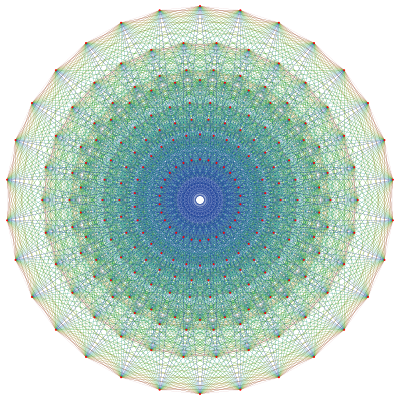
| « Local Langlands correspondences » | « Applied Mathematics » |
The theory of representations of groups is the non-commutative analogue of the theory of Fourier. Started in the beginning of the 19th century, the theory has not ceased to develop, and has found applications in different areas in mathematics and in physics. In the course, we treat the case of finite groups where the basic concepts of the theory are already present. The contents of this course is aimed mainly as a preparation to the course on representations of p-adic groups, but will also be useful for students preparing the French recruitment examination « Agrégation ». There is no prerequisite necessary to follow this course other than the foundations of linear algebra.
Plan : - Generalities on representations. - Irreducibility, Schur's Lemma, deomposition of representations. - Characters, orthogonality relations, character table, examples of groups of small order. - Fourier transformation, group algebra.- Construction of representations : induction, restriction. - Representations of the symmetric group and of the group GL(2, Fq). - Clifford-Mackey Theory, projective representations. - Arithmetic properties of representations, Theorem of Burnside.
References :Definition and study in a topological viewpoint of non archimedean locally compact fields in arbitrary characteristics (for example, finite extension of Qp or Fq[[X]]) : Valuations, absolute values and completions. Theorem of Ostrowski and its counterpart in positive characteristics. Haar measure on the additive and multiplicative group.
Arithmetic of finite extensions of local fields : - Extension of an valutaion. - Ramification. Unramified and totally ramified extensions, ramification degree and inertia. Galois group of a unramified extension. - Norm, trace, filtrations, differences, tamely ramified extensions. - Ramification groups (filtration of the Galois group). Theorem of Herbrand.
Construction of the Weil group of a local field and introduction to the local class field theory (if time permits).
References :The « Langlands' philosophy » is a vast collection of conjectures relating complex representations of certain algebraic groups and Galois groups. These correspondences have a deep arithmetic significance relating automorphic forms, arithmetic varieties and Galois groups. They are proved in a certain number of cases, but a lot remains to be done. Even in cases where they are proved, constructive versions are yet to be found. Recently, there are a lot of interest in their modular counterparts, that is, representations over an algebraic closure of a finite field.
The aim of this course is to give an introduction to these correspondences in the setting of the linear group GL(N,F) over a non-Archimedean local field F. We shall first define and study the basic objects : smooth representations of the group GL(N,F) on one hand, and N-dimensional representations of the Weil group on the other hand (a variant of the Galois group). For technical reasons, only the case N=2 will be treated in full explicitly. We shall then construct the invariants of representations, L and Epsilon factors, and finally state the correspondence which is expressed via the preservation of these invariants.
The course will be based on the monograph « The local Langlands conjecture for GL(2) » by C.J. Bushnell and G. Henniart.
There is eventually a possibility to carry on to a doctorate thesis in this theme.
References :Mathematical modelling and scientific computing are essential in physics, engineering and biology. The goal of this lecture is to introduce some of the fundamental methods in scientific computing together with their numerical analysis, in view of such applications.
Plan of the lecture : matrix computation - nonlinear equations - ordinary differential equations - optimization - introduction to finite differences
The lecture will be completed by theoretical and practical exercices on computer with the SCILAB software.
References :We shall present applications of functional analysis (theory of distributions, Sobolev spaces) to the study of partial differential equations in the linear case : methods of resolution, existence of weak and strong solutions and uniqueness of solutions.
References :The aim of this course is to show through few mathematical models mostly relevant from physics the use of the notion relative rearrangement. We shall start by presenting the definitions of monotone rearrangement, relative rearrangement and some selected properties, namely the Poincaré-Sobolev pointwise inequalities and their impact on some embeddings of Lorentz-Sobolev spaces. into some Banach function spaces. We shall give some applications in partial differential equations.
The background that is necessary to understand this course is the measure theory and the notion of Sobolev spaces.